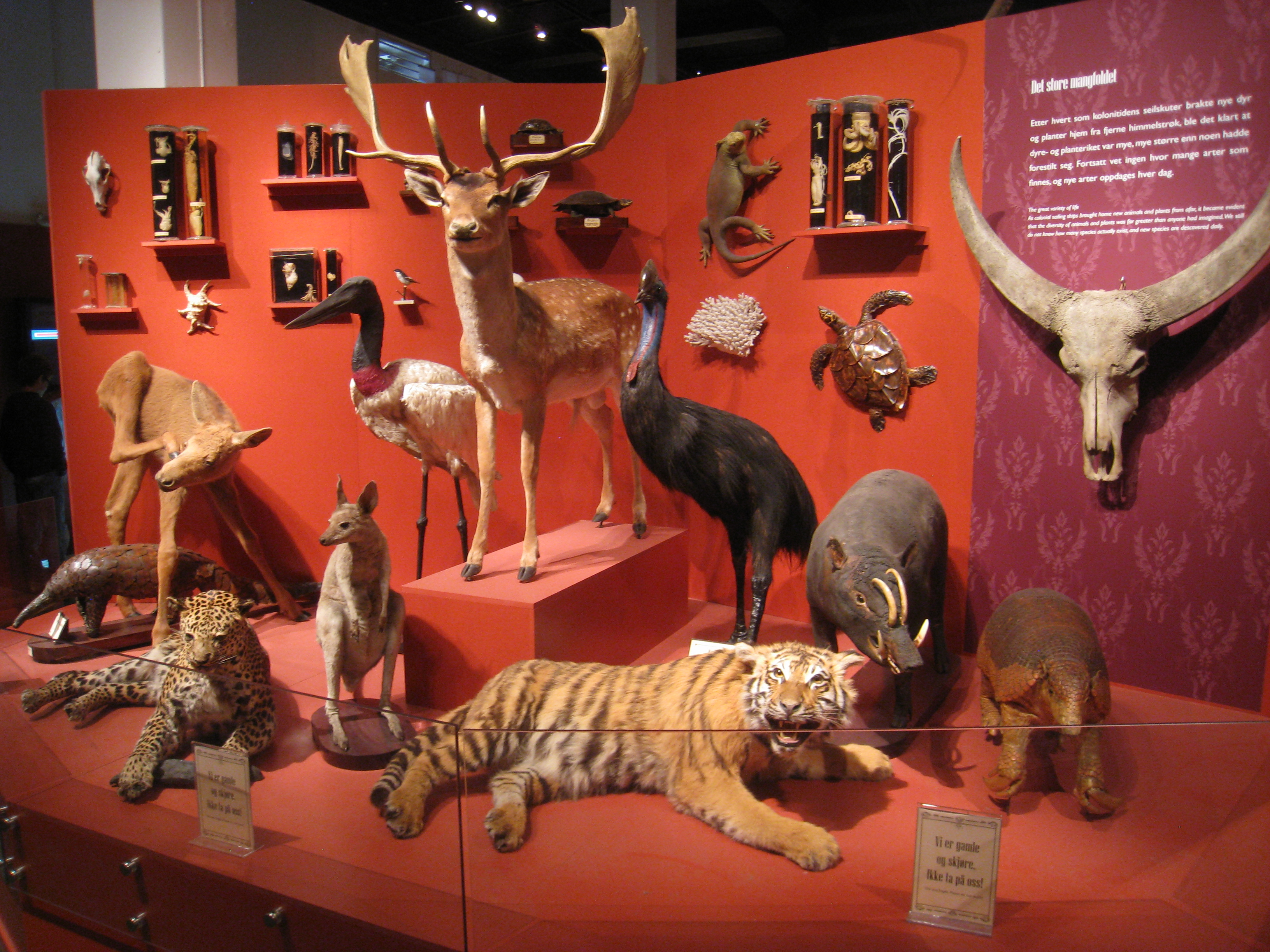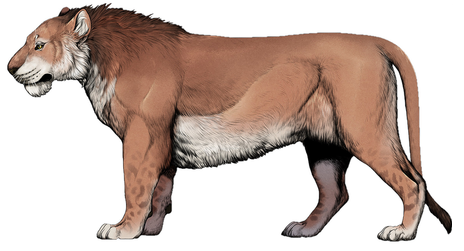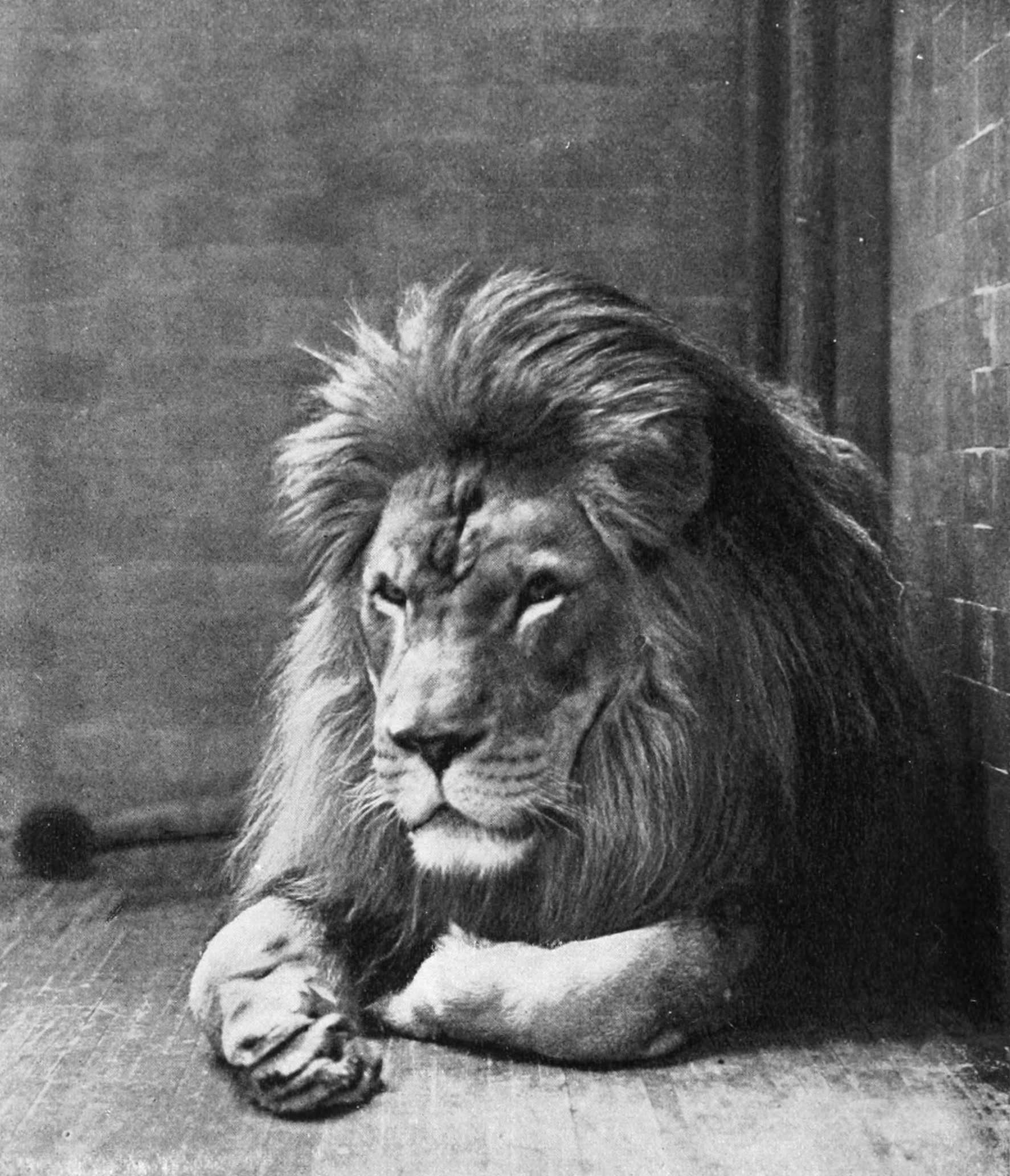|
Asiatic Lion
The Asiatic lion is a lion population of the subspecies ''Panthera leo leo''. Until the 19th century, it occurred in Saudi Arabia, eastern Turkey, Iran, Mesopotamia, and from east of the Indus River in Pakistan to the Bengal region and the Narmada River in Central India. Since the turn of the 20th century, its range has been restricted to Gir National Park and the surrounding areas in the Indian state of Gujarat. The first scientific description of the Asiatic lion was published in 1826 by the Austrian zoologist Johann N. Meyer, who named it ''Felis leo persicus''. The population has steadily increased since 2010. In 2015, the 14th Asiatic Lion Census was conducted over an area of about ; the lion population was estimated at 523 individuals, and in 2017 at 650 individuals. In 2020 the population was 674 and by 2025 it had increased to 891. Taxonomy ''Felis leo persicus'' was the scientific name proposed by Johann N. Meyer in 1826 who described an Asiatic lion skin from Persi ... [...More Info...] [...Related Items...] OR: [Wikipedia] [Google] [Baidu] |
Lion
The lion (''Panthera leo'') is a large Felidae, cat of the genus ''Panthera'', native to Sub-Saharan Africa and India. It has a muscular, broad-chested body (biology), body; a short, rounded head; round ears; and a dark, hairy tuft at the tip of its tail. It is sexually dimorphic; adult male lions are larger than females and have a prominent mane. It is a social species, forming groups called prides. A lion's pride consists of a few adult males, related females, and cubs. Groups of female lions usually hunt together, preying mostly on medium-sized and large ungulates. The lion is an apex predator, apex and keystone predator. The lion inhabits grasslands, savannahs, and shrublands. It is usually more diurnality, diurnal than other wild cats, but when persecuted, it adapts to being active nocturnality, at night and crepuscular, at twilight. During the Neolithic period, the lion ranged throughout Africa and Eurasia, from Southeast Europe to India, but it has been reduced to fr ... [...More Info...] [...Related Items...] OR: [Wikipedia] [Google] [Baidu] |
Zoological Specimen
A zoological specimen is an animal or part of an animal preserved for scientific use. Various uses are: to verify the identity of a (species), to allow study, increase public knowledge of zoology. Zoological specimens are extremely diverse. Examples are bird and mammal study skins, mounted specimens, skeletal material, casts, pinned insects, dried material, animals preserved in liquid preservatives, and microscope slides. Natural history museums are repositories of zoological specimens Study skins Bird and mammal specimens are conserved as dry study skins, a form of taxidermy. The skin is removed from the animal's carcass, treated with absorbents, and filled with cotton or polyester batting (In the past plant fibres or sawdust were used). Bird specimens have a long, thin, wooden dowel wrapped in batting at their center. The dowel is often intentionally longer than the bird's body and exits at the animal's vent. This exposed dowel provides a place to handle the bird without distu ... [...More Info...] [...Related Items...] OR: [Wikipedia] [Google] [Baidu] |
Panthera Spelaea
''Panthera spelaea'', commonly known as the cave lion (or less commonly as the steppe lion), is an extinct ''Panthera'' species that was native to Eurasia and northwest North America during the Pleistocene epoch. Genetic analysis of ancient DNA has revealed that while closely related, it was a distinct species genetically isolated from the modern lion (''Panthera leo''), with the genetic divergence between the two species estimated at around 500,000 years ago. The earliest fossils of the ''P. spelaea'' lineage (either regarded as the separate species ''Panthera fossilis'' or the subspecies ''P. spelaea fossilis'') in Eurasia date to around 700,000 years ago (with possible late Early Pleistocene records). It is closely related and probably ancestral to the American lion (''Panthera atrox''). The species ranged from Western Europe to eastern Beringia in North America, and was a prominent member of the mammoth steppe fauna, and an important apex predator across its range along wit ... [...More Info...] [...Related Items...] OR: [Wikipedia] [Google] [Baidu] |
Panthera Fossilis
''Panthera fossilis'' (also known as ''Panthera leo fossilis'' or ''Panthera spelaea fossilis'') is an extinct species of Felidae, cat belonging to the genus ''Panthera,'' known from remains found in Eurasia spanning the Middle Pleistocene and possibly into the Early Pleistocene. Although often historically considered a subspecies of the living lion (''Panthera leo''), ''Panthera fossilis'' is currently considered either a distinct species to be ancestral to or a Chronospecies, chronosubspecies of ''Panthera spelaea'' (commonly known as the cave lion or steppe lion). In comparison to Late Pleistocene ''Panthera spelaea'' specimens, ''Panthera fossilis'' tends to be considerably larger, up to , considerably exceeding modern lions in size, and making them among the largest cats to have ever lived, along with the South American sabertooth ''Smilodon populator''. Taxonomic history The species was first described by Wilhelm von Reichenau in 1906 from remains Excavation (archaeology) ... [...More Info...] [...Related Items...] OR: [Wikipedia] [Google] [Baidu] |
Barbary Lion
The Barbary lion was a population of the lion subspecies '' Panthera leo leo''. It was also called North African lion, Atlas lion, and Egyptian lion. It lived in the mountains and deserts of the Maghreb of North Africa from Morocco to Egypt. It was eradicated following the spread of firearms and bounties for shooting lions. A comprehensive review of hunting and sighting records revealed that small groups of lions may have survived in Algeria until the early 1960s, and in Morocco until the mid-1960s. Today, it is locally extinct in this region. Fossils of the Barbary lion dating to between 100,000 and 110,000 years were found in the cave of Bizmoune near Essaouira. Until 2017, the Barbary lion was considered a distinct lion subspecies. Results of morphological and genetic analyses of lion samples from North Africa showed that the Barbary lion does not differ significantly from the Asiatic lion and falls into the same subclade. This North African/Asian subclade is closely re ... [...More Info...] [...Related Items...] OR: [Wikipedia] [Google] [Baidu] |
Molecular Genetics
Molecular genetics is a branch of biology that addresses how differences in the structures or expression of DNA molecules manifests as variation among organisms. Molecular genetics often applies an "investigative approach" to determine the structure and/or function of genes in an organism's genome using genetic screens. The field of study is based on the merging of several sub-fields in biology: classical Mendelian inheritance, cellular biology, molecular biology, biochemistry, and biotechnology. It integrates these disciplines to explore things like genetic inheritance, gene regulation and expression, and the molecular mechanism behind various life processes. A key goal of molecular genetics is to identify and study genetic mutations. Researchers search for mutations in a gene or induce mutations in a gene to link a gene sequence to a specific phenotype. Therefore molecular genetics is a powerful methodology for linking mutations to genetic conditions that may aid th ... [...More Info...] [...Related Items...] OR: [Wikipedia] [Google] [Baidu] |
Morphology (biology)
Morphology (from Ancient Greek μορφή (morphḗ) "form", and λόγος (lógos) "word, study, research") is the study of the form and structure of organisms and their specific structural features. This includes aspects of the outward appearance (shape, structure, color, pattern, size), as well as the form and structure of internal parts like bones and organs, i.e., anatomy. This is in contrast to physiology, which deals primarily with function. Morphology is a branch of life science dealing with the study of the overall structure of an organism or taxon and its component parts. History The etymology of the word "morphology" is from the Ancient Greek (), meaning "form", and (), meaning "word, study, research". While the concept of form in biology, opposed to function, dates back to Aristotle (see Aristotle's biology), the field of morphology was developed by Johann Wolfgang von Goethe (1790) and independently by the German anatomist and physiologist Karl Fried ... [...More Info...] [...Related Items...] OR: [Wikipedia] [Google] [Baidu] |
Skull
The skull, or cranium, is typically a bony enclosure around the brain of a vertebrate. In some fish, and amphibians, the skull is of cartilage. The skull is at the head end of the vertebrate. In the human, the skull comprises two prominent parts: the neurocranium and the facial skeleton, which evolved from the first pharyngeal arch. The skull forms the frontmost portion of the axial skeleton and is a product of cephalization and vesicular enlargement of the brain, with several special senses structures such as the eyes, ears, nose, tongue and, in fish, specialized tactile organs such as barbels near the mouth. The skull is composed of three types of bone: cranial bones, facial bones and ossicles, which is made up of a number of fused flat and irregular bones. The cranial bones are joined at firm fibrous junctions called sutures and contains many foramina, fossae, processes, and sinuses. In zoology, the openings in the skull are called fenestrae, the most ... [...More Info...] [...Related Items...] OR: [Wikipedia] [Google] [Baidu] |
Henri Marie Ducrotay De Blainville
Henri Marie Ducrotay de Blainville (; 12 September 1777 – 1 May 1850) was a French zoologist and anatomist. Life Blainville was born at Arques-la-Bataille, Arques, near Dieppe, Seine-Maritime, Dieppe. As a young man, he went to Paris to study art, but ultimately devoted himself to natural history. He attracted the attention of Georges Cuvier, for whom he occasionally substituted as lecturer at the Collège de France and at the Athenaeum Club, London. In 1812, he was aided by Cuvier in acquiring the position of assistant professor of anatomy and zoology in the Faculty of Sciences at Paris. Eventually, relations between the two men soured, a situation that ended in open enmity. In 1819, Blainville was elected a member of the American Philosophical Society in Philadelphia. In 1825, he was admitted a member of the French Academy of Sciences; and in 1830, he was appointed to succeed Jean-Baptiste Lamarck in the chair of natural history at the museum. Two years later, on the death of ... [...More Info...] [...Related Items...] OR: [Wikipedia] [Google] [Baidu] |
Sir William Jardine, 7th Baronet
Sir William Jardine, 7th Baronet of Applegarth FRS FRSE FLS FSA (23 February 1800 – 21 November 1874) was a Scottish naturalist. He is known for his editing of a long series of natural history books, ''The Naturalist's Library''. Life and work Jardine was born on 23 February 1800 at 28 North Hanover Street in Edinburgh, the son of Sir Alexander Jardine, 6th baronet of Applegarth and his wife, Jane Maule. He was educated in both York and Edinburgh then studied medicine at Edinburgh University. From 1817 to 1821 he lodged with Rev Dr Andrew Grant at James Square, an arrangement made by his father. Grant was minister of St Andrew's Church on George Street. In his early years, aged only 25, he was elected a fellow of the Royal Society of Edinburgh his proposer being Sir David Brewster. He was a co-founder of the Berwickshire Naturalists' Club, and contributed to the founding of the Ray Society. He was "keenly addicted to field-sports, and a master equally of the rod and ... [...More Info...] [...Related Items...] OR: [Wikipedia] [Google] [Baidu] |
Zoological Society Of London
The Zoological Society of London (ZSL) is a charity and organization devoted to the worldwide animal conservation, conservation of animals and their habitat conservation, habitats. It was founded in 1826. Since 1828, it has maintained London Zoo, and since 1931 Whipsnade Zoo. History On 29 November 1822, the birthday of John Ray, "the father of modern zoology", a meeting held in the Linnean Society in Soho Square led by Rev. William Kirby (entomologist), William Kirby, resolved to form a "Zoological Club of the Linnean Society of London". Between 1816 and 1826, discussions between Stamford Raffles, Humphry Davy, Joseph Banks and others led to the idea that London should have an establishment similar to the Jardin des Plantes in Paris. It would house a zoological collection "which should interest and amuse the public." The society was founded in April 1826 by Stamford Raffles, Sir Stamford Raffles, the Henry Petty-Fitzmaurice, 3rd Marquess of Lansdowne, Marquess of Lansdo ... [...More Info...] [...Related Items...] OR: [Wikipedia] [Google] [Baidu] |
Tower Of London
The Tower of London, officially His Majesty's Royal Palace and Fortress of the Tower of London, is a historic citadel and castle on the north bank of the River Thames in central London, England. It lies within the London Borough of Tower Hamlets, which is separated from the eastern edge of the square mile of the City of London by the open space known as Tower Hill. It was founded toward the end of 1066 as part of the Norman Conquest. The White Tower (Tower of London), White Tower, which gives the entire castle its name, was built by William the Conqueror in 1078 and was initially a resented symbol of oppression, inflicted upon London by the new Normans, Norman ruling class. The castle was also used as a prison from 1100 (Ranulf Flambard, Bishop of Durham) until 1952 (the Kray twins), although that was not its primary purpose. A grand palace early in its history, it served as a royal residence. As a whole, the Tower is a complex of several buildings set within two concentric ring ... [...More Info...] [...Related Items...] OR: [Wikipedia] [Google] [Baidu] |










